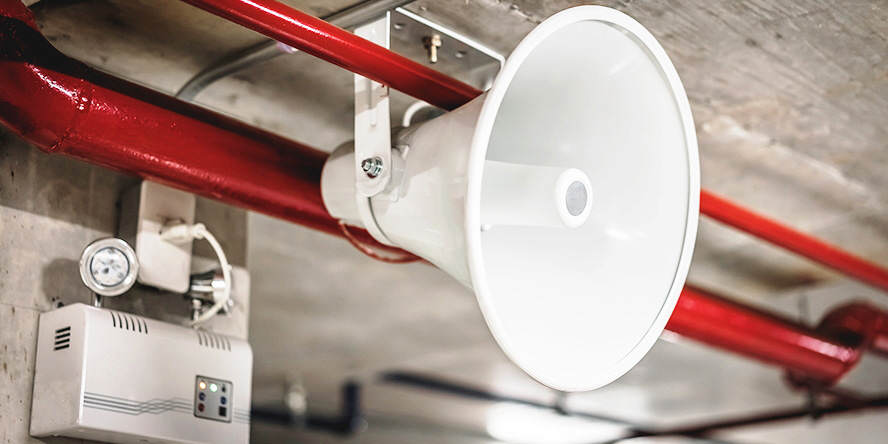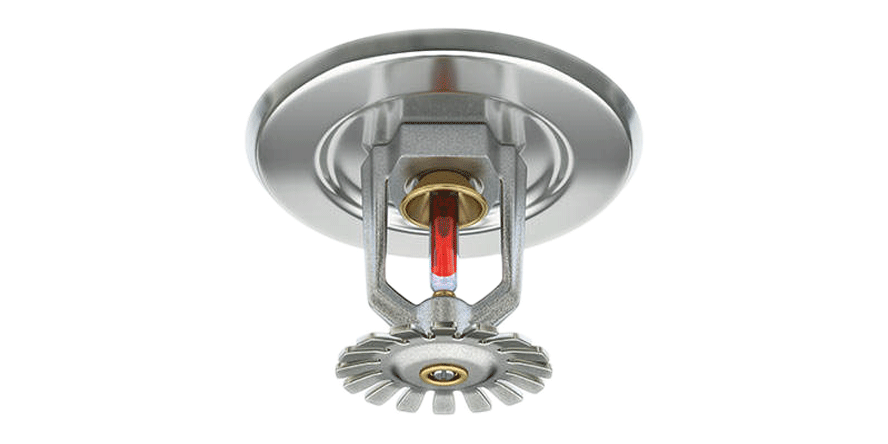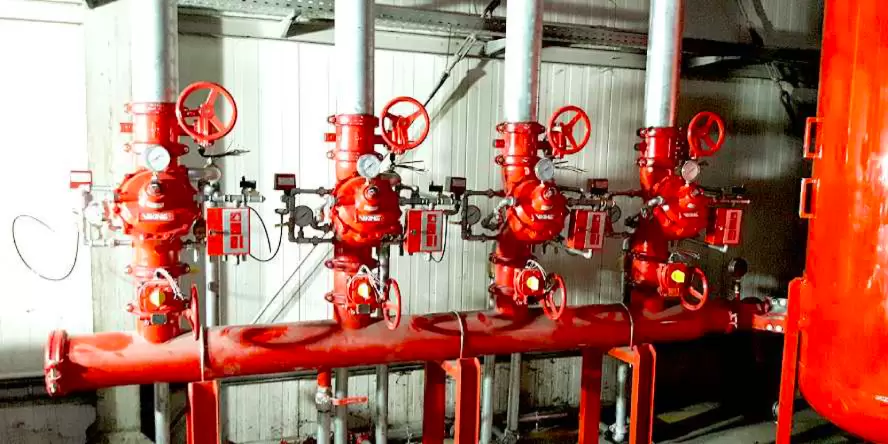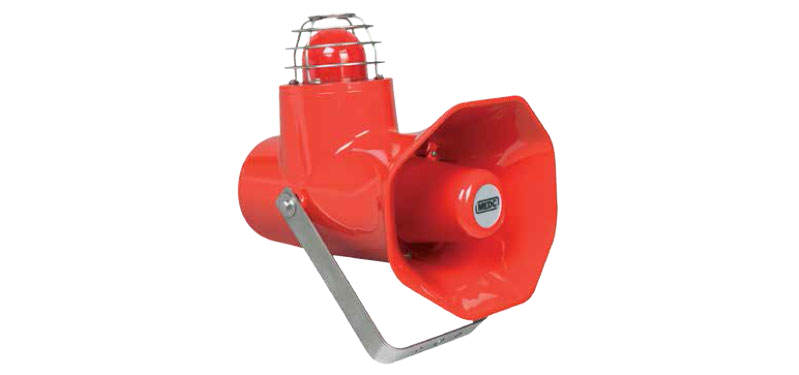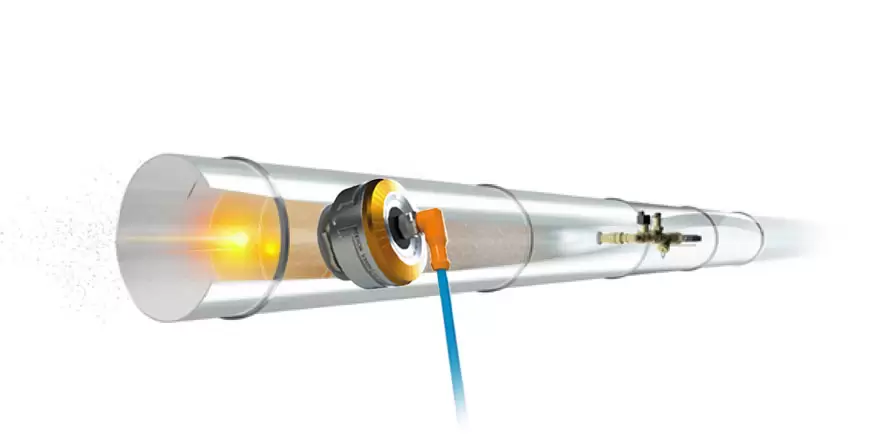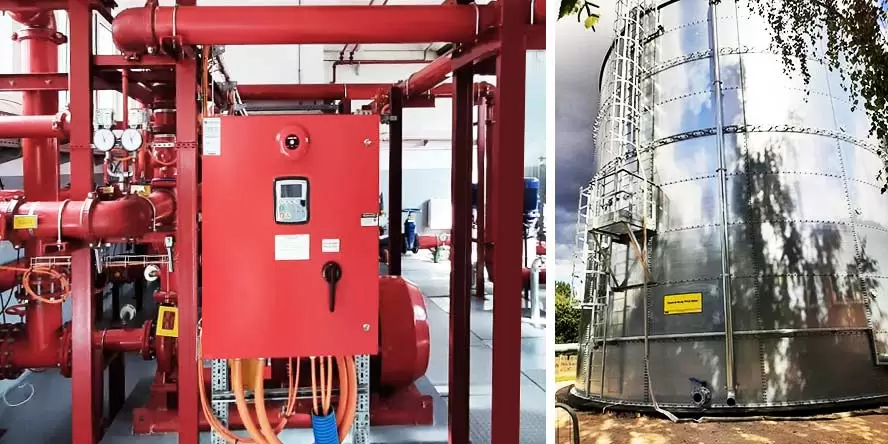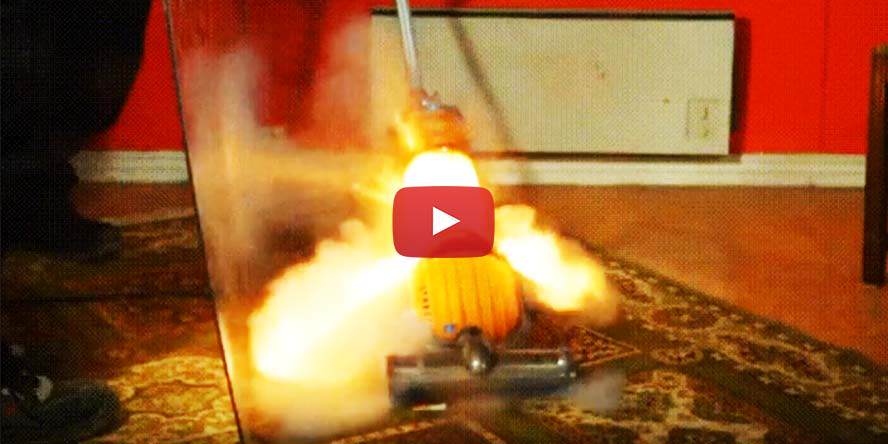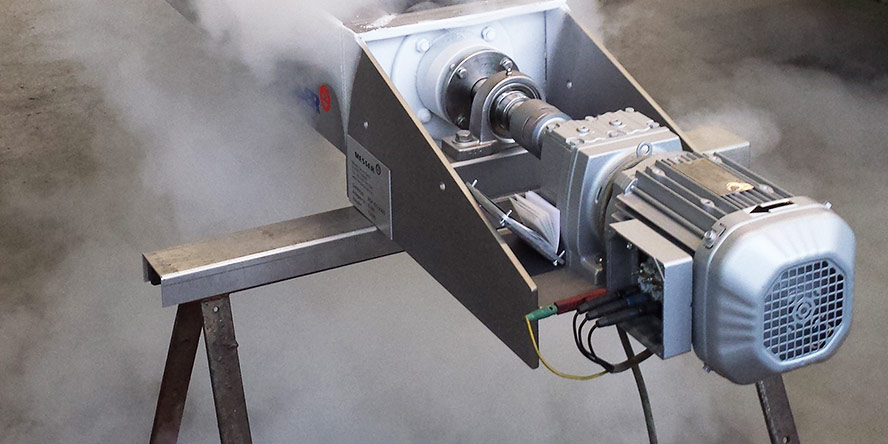Wireless fire detection and alarm system | fire detection system
We design and implement wireless fire detection and alarm systems which do not require traditional cabling. Such solution is simple and fast to install, and at the same time extremely aesthetic (the sub-assemblies imitate marble and wood or may be finished to RAL colours). All that makes such systems ideal for buildings where interior must remain intact, high aesthetics is important and the simplicity of installing wires is crucial. This refers mainly to historic buildings, religious buildings or heritage monuments under the supervision of heritage conservation officer (churches, museums, cathedrals). The proposed wireless fire detection and alarm system may be easily integrated with the traditional systems of other manufacturers.
The devices within a system are powered with generally available CR123 batteries (in other systems expensive battery packs are often used), which ensure between 6 and 8 years of operation. The system is also provided with back-up batteries which keep the alarm system going for 6 months of the moment the main battery is discharged.
What we will do for you
A wireless fire detection and alarm system is one of several key solutions we design and implement in enclosed structures (offices, hotels, churches, halls, warehouses). Apart from the wireless solutions, we provide also traditional fire detection and alarm systems as well as hybrid solutions which combine both techniques. An important recipient of our offer is industry, for which we supply dedicated fire-fighting solutions. Below presented is the scope of work we provide. In that regard we provide comprehensive solutions, starting from preparing adequate documentation, through design development, and ending with implementation and integration of the fire detection and alarm system with the existing safety solutions.
FIRE-FIGHTING DOCUMENTS
The current regulations require that a fire safety plan and fire scenarios for the premises subject to fire hazard are prepared. They are basis for further works consisting in designing and implementing the fire alarm systems or complete fire-fighting systems. If no such documents have been prepared for the respective structures, we may start from preparing them..
- Fire safety plan – the document is required for buildings and their parts representing separate fire zones, intended for performing public utility functions, boarding house, production building, warehouse, livestock building, where hazard explosion zone is present, or:
- the gross cubic volume of the building or its part representing a separate fire zone exceeds 1,000 m3 (does not apply to livestock buildings),
- the gross cubic volume of a livestock building exceeds 1,500 m3,
- the fire zone area of a structure other than a building exceeds 1,000 m2.
- Fire scenarios – a fire scenario is a description of the sequence of the possible events during a fire, representative for the respective place of its occurrence or area of impact, specifically for a fire zone or a smoke zone, considering mainly the way of operation of fire-fighting equipment, utility or engineering equipment, as well as their joint operation and interaction, and also organisational solutions needed for the proper operation of the designed safety measures..
- ATEX documents – apart from the aforesaid documents, mainly in reference to industrial structure, our documentation department also prepares such documents as:
Explosion Hazard Zones Setting
- Explosion Hazard Assessment
- Explosion Risk Assessment
- Explosion Protection Document
FIRE DETECTION SYSTEM DESIGN
We design fire detection systems in consideration of the working conditions, specific requirements of the given building and fire scenarios provisions. Completely different requirements apply to a system protecting belt conveyors in a coal conveyor gallery, and different to a historic building or a church. A coal conveyor gallery is characterised with high-dustiness, humidity and variable temperatures, whereas in a sacral building it is important to install the system without any major interference in the building integrity. Each of the structures is, therefore, characterised with different requirements and working conditions which need to be planned at the designed stage.
.
Therefore, design work is preceded with an audit and interview, which indicated serious problems and assumptions for further work consisting in implementing an effective fire detection system.
Selected components applied in the designed fire detection systems:
- Fire alarm panel
- Emergency power supply equipment
- Manual call points
- Optical smoke detectors
- Line heat detectors
- IR flame detectors
- Supervising module
- Signal controllers
- Status indicators
- Strobe light sirens
- Integrating and non-visualisation software
FIRE DETECTION SYSTEM INTEGRATION WITH OTHER SYSTEMS
When implementing a fire detection system, we integrate it with various safety and building automation systems. We also create visualisation, which we combine with the building or industrial system layout plans. This enables implementation of the assumed fire scenarios and managing the whole safety system in an efficient and intuitive manner.
The systems we integrate:
- wired and wireless systems of other manufacturers
- access control system
- voice alarm system
- smoke ventilation system
- fire lockout system
- fire dampers system
- lift system
- ventilation system
DELIVERY, INSTALLATION AND COMMISSIONING OF A FIRE DETECTION SYSTEM
With our installation group we are capable to perform a task in a comprehensive manner, i.e. starting from preparing fire scenarios, through concept and design, and ending with delivery and installation. In this way our customer may rely on a partner responsible for all of the implementation stages. Such solution may significantly facilitate the investment process, providing a guarantee that the final effect complies not only with the legal requirements but also the customer’s individual expectations.
Application of a wireless fire detection and alarm system
The system has been created to protect historic, sacral and public utility buildings. Its use is particularly justified in one of the following circumstances:
NECESSITY TO KEEP THE INTERIOR INTACT
Many buildings have a historic or sacral value, which means that it is of crucial importance that the fire detection and alarm system does not affect the interior. Absence of cabling provides for the possibility of fast and practically non-invasive installation, which does not affect either walls or ceilings. The following buildings count in that category:
- churches and cathedrals
- museums
- historic buildings
- residences
ENSURING HIGH INTERIOR AESTHETICS
The proposed system has special elements imitating marble or decorative wood. Alternatively, the elements may be painted to any RAL colour. That characteristics combined with the absence of wires makes the wireless fire detection and alarm system ideal for buildings of high-aesthetics, historic or sacral ones:
- buildings of high aesthetics
- churches and cathedrals
- museums
- art galleries
- residences
- some office buildings and commercial centres
NECESSITY TO SUPPLEMENT THE EXISTING SYSTEMS
Quite frequently the existing buildings have no sufficient fire-fighting systems. That also happens in newly built ones two. In such circumstances, time and easiness of installation are important, so that no excessive changes or interference with the existing infrastructure may be avoided. For such situation the wireless system is ideal, as it may be simply integrated with the existing systems of other manufacturers. The wireless system also means much shorter time of installation as compared to the traditional solutions.
The wireless fire detection and alarm system will prove to be effective when structures fail to fulfil the legal requirements for fire safety and at the same time:
- the installation of a wired system is difficult and costly,
- the key parameter for the investor is the short time of the system installation,
- the work must be carried out during the normal operation of the structure.
FAST AND CLEAN INSTALLATION
It happens that there is a need to urgently provide a structure with an additional fire-fighting system compliant with the binding regulations, or when as structure operates on on-going basis and its closure even for a short period is not possible. In such cases the wireless system with its very fast and hardly invasive installation will be ideal. There is no need to lay cables, which means that the work is clean. The installation generates practically no dust and may be carried out during the normal operation of the respective structure.
A wireless fire detection and alarm system will be best if fast and clean installation is needed, for example when:
- work must be carried out during the normal operation of a structure, with minimum impact on the environment,
- the systems of an existing structure must be supplemented, and the application of traditional systems is difficult and costly.
Wireless fire detection and alarm system concept
The proposed fire detection and alarm system is the first comprehensive wireless solution for all structure where it is not possible to provide traditional cabling or carry out construction works, or even the smallest repair. Its installation is fast and efficient, whereas thanks to the elements which imitate marble or wood or are painted to a RAL colour the effect is highly aesthetic.
MAJOR BENEFITS
Most benefits deriving from the installation of a wireless fire detection and alarm system will be visible in buildings of high-aesthetics or historic buildings, as well as ones which require fast and clean installation without any wires (churches, cathedrals, museums, buildings subject to Heritage Conservation Officer’s supervision, or existing buildings which must be provided with additional systems, often during their normal operation).
The strongest arguments for selecting that solution include:
- permits required by law, issued by CNBOP [the Scientific and Research Centre for Fire Protection],
- fast, clean and simple installation without laying cables, hammering out, raising dust, and creating a mess,
- ensuring high system aesthetics (the system elements imitate marble, wood or may be painted to a RAL colour),
- possibility to easily install the system at any stage of the building life cycle,
- unlimited possibility to integrate the system with the existing ones,
- possibility to provide hybrid operation, i.e. partially wired and partially wireless,
- low operating costs.
PRINCIPLE OF OPERATION
The wireless part of a fire detection and alarm system is based on an established in Europe, patented Lybra digital protocol using the 868-870 MHz frequency. Such system elements as detectors, alarm sounders, audible and visual alarm systems, manual call points, signal intensifiers and signal translator communicate on wireless basis. A coded signal is sent through 7 independent channels, which connected with a multi-directional antenna practically eliminates interference and fadeout. The system communication fulfils the technical requirements of a standard for fire alarm sub-assemblies using radio frequency links (EN 54:25).
Any devices in their basic version have a transmission reach of 200 m*. With the use of expander modules (SGWE) the distance may be increased to 500 m*. The solution is useful in large spaces or complex topography of buildings.
* rated reach. Owing to the variety of installation places and different structures of buildings, the actual reach may be different from the stated one (either higher or lower). It is recommended to measure the signal strength and prepare a technical report before the system is installed.
All of the devices of a fire detection and alarm system are integrated through a wire to wireless system translator (VW2W), which in accordance with the regulation is connected to a wired loop of the fire detection system. Each VW2W translator enables connection of up to 32 wireless devices of any kind. In each loop of the intelligent fire detection system there may be up to 7 wireless section (micro cells) created based on a single translator. A VW2W translator enables the transmission of alarm/error messages and identification data from the wireless elements of the fire-fighting system main control panel. Additionally, for safety reasons, it records in its own memory any events which may serve as a source of information verification (or back-up for the events register) in case of doubt or main panel damage.
LOW BATTER COST – LONG OPERATION
The system devices are powered with generally available standard lithium batteries CR123 of 3 V voltage, which may be purchase at any shop. The main batteries keep the system going for 6 to 8 years, whereas with back-up batteries maintain the alarm status for 6 months of the moment the main battery is discharged. Batteries are monitored on continuous basis and their discharging is reported with a respective message in the system main panel. The maximum battery operation time of 8 years is a record among the wireless solutions offered on the market.
Control panel
The control panel being the hart of a wireless fire detection and alarm system has been designed in accordance with the standards applicable to control panels and supply systems in fire-fighting systems (EN 54-2 and EN 54-4). The equipment may serve 240 devices divided into 20 alarm sections. Moreover, it is furnished with two programmable voice alarm circuits, two programmable transmitters, a LED display, a memory storing up to 1,000 events and a USB interface. Optionally, it may be provided with RS232, RS485, TCP/IP cards and a GMS module to culminate alarms and errors.
Signal translator
The device processes information sent to it from wireless devices (detectors, expanders, modules, etc.) and forwards it to the control panel. Up to 32 wireless devices may be connected to one translator. The device ensures two-directional communication. Thanks to its complete communication both the translator and the wireless devices are recognised by the control panel as addressable devices. Thanks to that the protected area may be divided into sections.
Expander
An SGWE 1000 expander ensures radio signal intensification, thanks to which the distances between the devices within a wireless fire detection and alarm system may be increased. The nominal reach of the system sub-assemblies is 200 metres, and the expander extends that distance to 500 metres. It is useful in protecting large-space structures or ones of complicated topography. Up to 32 wireless devices may be connected to one expander.
Wireless fire detector
The system is built based on three types of sensors: a heat sensor, an optical sensor and an optical-and-heat sensor, which combines the features of the former two. All of the sensors are fully addressable and compatible with all of the expanders (signal intensifiers) and translators by Argus. The applied algorithms ensure optimal operation of the detectors by eliminating false alarms. Thanks to a very low energy consumption, the device may operate up to 8 years on one set of batteries.
Wireless manual call point
A wireless manual call point ensures two-directional communication with the system. After its activation the signal is immediately transferred to the control panel. After activation the device is reset with the use of the attached key. The device is very easy to install and extremely cheap to operate. A wireless manual call point is powered by generally available batteries. The device has been developed in accordance with the standards for manual call points and sub-assemblies using radio frequency links in fire alarm systems (EN 54-11 and EN 54-25).
Wireless alarm sounder/ audible and visual alarm system
Fire is signalled through wireless alarm sounders or audible and visual alarm systems. The devices comply with the standard requirements for fire alarm systems and visual alarms in fire-fighting systems. The device is resistant to weather conditions. It has 32 sounds and a mute mode, in which it will only operate as a visual alarm. Thanks to the incorporated microphone it is capable of detecting proper operation when the alarm is sounded and return an error information to the system. The device installation is very fast and simple, and the use of the same generates very low costs.

